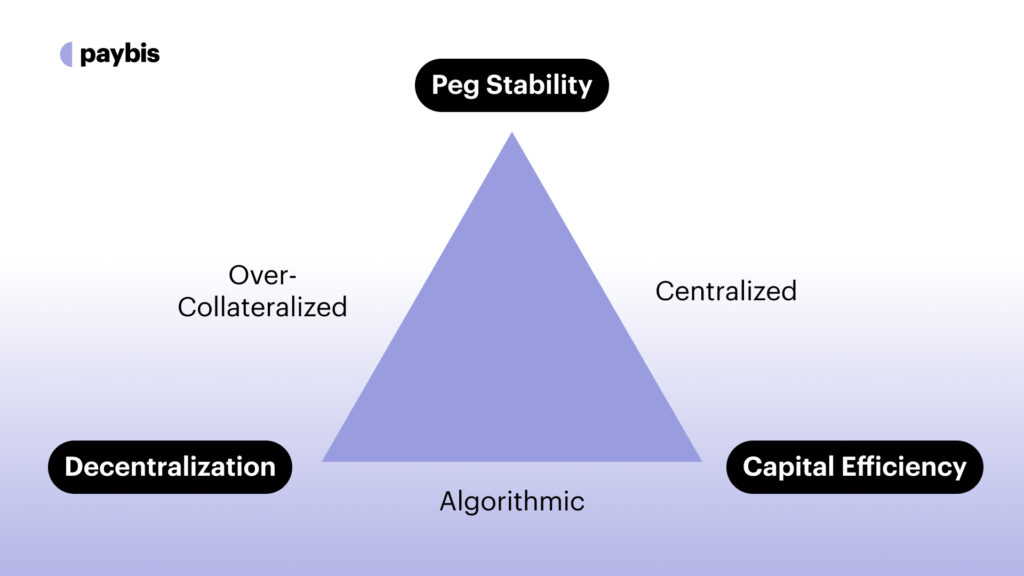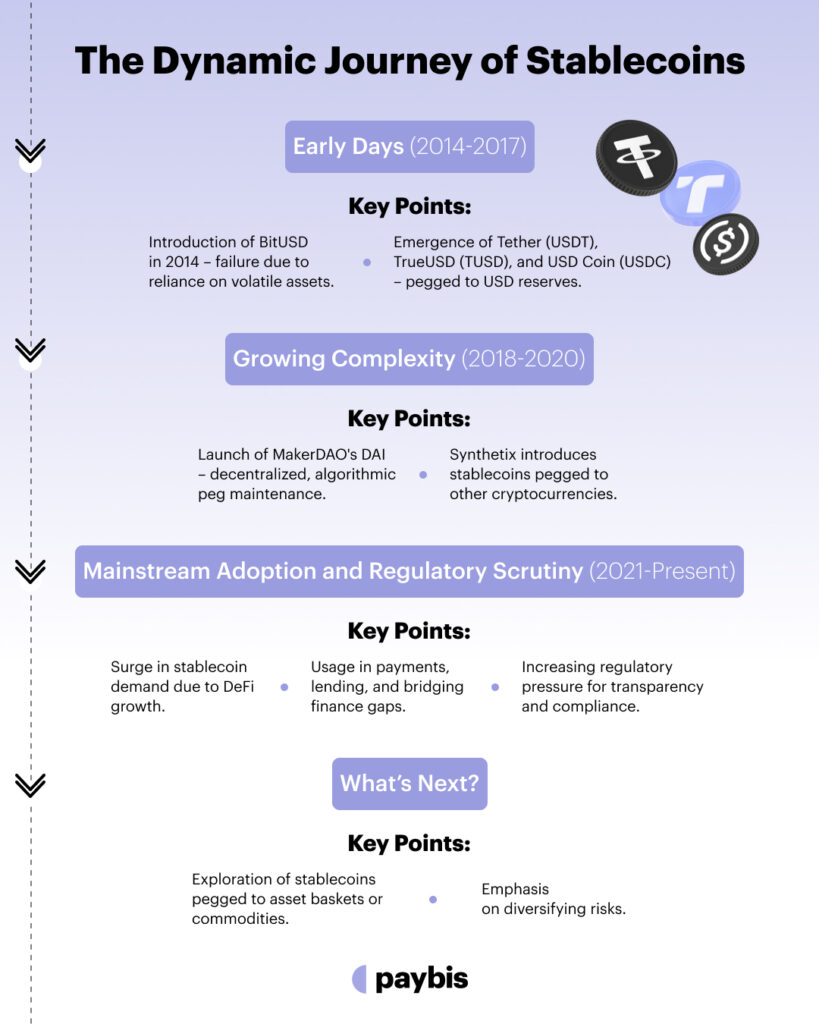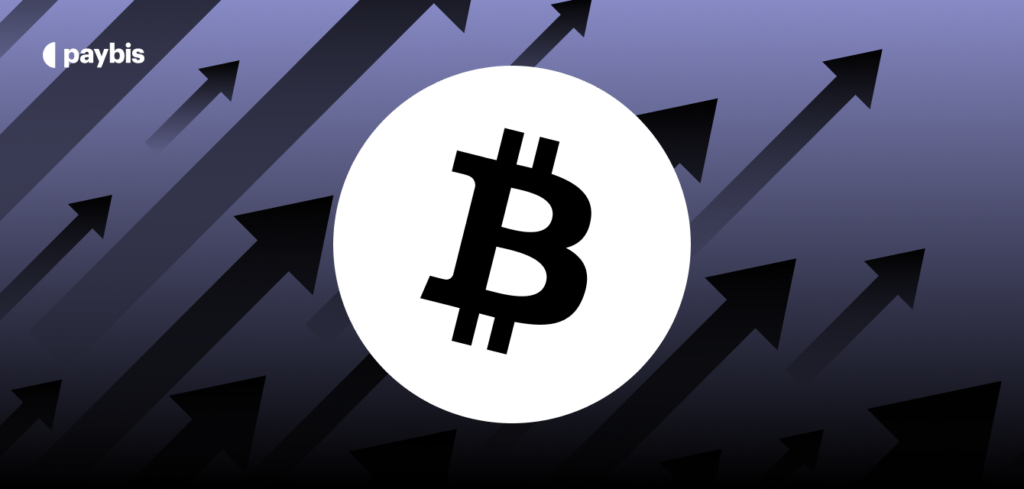Stablecoin
Stablecoins are a class of cryptocurrencies whose value is pegged to another financial instrument/asset like fiat currency or commodity. This helps them achieve a stale value for trading — hence the name.
Cryptocurrencies are challenging traditional monetary systems. They are known for their potential for high returns, but also for their significant volatility. This volatility, while attractive to some investors, can pose risks and hinder the practical use of cryptocurrencies for everyday transactions and stable store of value.
Enter stablecoins, a unique class of cryptocurrencies designed to offer the best of both worlds: the innovative features of cryptocurrencies and the stability of traditional fiat currencies.
The significance of stablecoins lies in their ability to provide a sense of security and predictability in an otherwise turbulent market. By mitigating the risk of extreme price swings, they enable more practical and everyday use of digital currencies, such as in online purchases, remittances, and as a reliable store of value.
In this article, we explore what stablecoins are and how they provide stability in what is perhaps the most volatile investment vehicle in modern finance.
Table of contents
- What Is A Stablecoin?
- What Is the Purpose of Stablecoin?
- Types of Stablecoins
- Classifying Stablecoins Based on Collateral
- History and Evolution of Stablecoins
- How Do Stablecoins Work?
- Advantages of Stablecoins
- Challenges and Criticisms
- Stablecoins vs. Other Cryptocurrencies
- Major Stablecoins in the Market
- Future of Stablecoins
- Potential for Mainstream Adoption
- How to Get Started with Stablecoins
- Final Thoughts
What Is A Stablecoin?
Stablecoins are a class of cryptocurrencies whose value is pegged to another financial instrument/asset like fiat currency or commodity. This helps them achieve a stale value for trading — hence the name.
By utilizing this property, stablecoins can tackle the volatility that generally comes with cryptocurrencies like Bitcoin. For example, Bitcoin’s price peaked at over $63,000 in April 2021 from under $5,000 in March 2020. Soon, Bitcoin ended up losing 50% of its value in the next two months.
Such volatility, say like that of BTC price, is not favorable for micro-transactions (daily transactions) and frequent usage. Stablecoins like USDT and USDC come as a solution to this problem, thus making cryptocurrencies usable as a P2P value exchange mechanism.
What Is the Purpose of Stablecoin?
Stablecoins aim to offer the best of both worlds: the instant processing and security of payments of cryptocurrencies, and the volatility-free stable valuations of fiat currencies.
They are commonly used to facilitate trading on crypto exchanges, as a safe haven for investors during periods of high volatility in the crypto market, and for digital transactions and remittances.
Most people hit roadblocks on how to pay with Bitcoin at some point. Stablecoins help them get further as there are more avenues to spend stablecoin than volatile cryptocurrencies.
Types of Stablecoins
What makes stablecoins different from other cryptocurrencies is that it has been pegged to other assets. These assets can be anything from fiat, other crypto, and algorithms that also lay the foundation of different types of stablecoins.
Fiat-Backed Stablecoins
Fiat-backed are the most common type of stablecoins that are pegged to the US dollar (e.g., Tether, USD Coin) or the Euro (e.g., Stasis Euro). These stablecoins have a reserve of the pegged asset. For example, for every 1 USDC in circulation, there should be at least $1 held in reserve.
As these stablecoins are backed with real-world assets, they are considered to be more stable.
Algorithmic Stablecoins
These stablecoins aren’t backed by any external assets. Instead, these use algorithms to adjust their supply based on demand trying to maintain their peg.
These stablecoins are completely decentralized with a potential for high yield. However, as these stablecoins are newer and have a more complex approach, they also come with different risks.
Commodities-Backed Stablecoins
Some stablecoins pegged to the value of commodities like gold (e.g., Pax Gold) offer an alternative to fiat-backed and crypto-backed options. These stablecoins also come with additional benefits like hedging against inflation, exposure to commodity markets, and decentralized access to the benefits of blockchain technology.
Crypto-Backed Stablecoins
Stablecoins pegged to other cryptocurrencies, also known as crypto-backed stablecoins, take a different approach to maintaining stability compared to fiat-backed or commodity-backed options. Instead of using external assets like fiat or commodities, these coins rely on other, less volatile cryptocurrencies as their anchor (e.g., DAI).
Classifying Stablecoins Based on Collateral

Stablecoins can be classified based on the amount and type of collateral backing them:
- Fully Collateralized Stablecoins: These have 1:1 backing with traditional assets, such as fiat currency (USD, EUR) or commodities (gold). Each stablecoin in circulation is equivalent to a specific amount of the underlying asset held in reserve.
- Over-Collateralized Stablecoins: These are backed by a surplus of collateral, often in the form of other cryptocurrencies. The excess collateral is used to absorb price fluctuations and maintain stability, especially in volatile markets.
- Partially Collateralized Stablecoins: These stablecoins are backed by a portion of the reserve assets, often supplemented with other mechanisms like algorithmic controls to maintain their peg.
- Non-Collateralized (Algorithmic) Stablecoins: These do not have any collateral backing. Instead, they use algorithms and smart contracts to control the supply of the stablecoin, expanding or contracting it based on demand to maintain a stable value.
Below is a head-to-head comparison of collateralized and over-collateralized stablecoins:
| Collateralized | Over-Collateralized | |
| Purpose | Provides security and reduces risk | Provides additional buffer against volatility and potential losses |
| Example | Fiat-backed stablecoin (1 USDC = $1 in reserve) | Crypto-backed stablecoin (1 DAI = 1.5 ETH in reserve) |
| Risk profile | Lower risk than unbacked assets, but still susceptible to fluctuations in collateral | Lower risk due to excess collateral, but may be less efficient |
| Benefits | Provides considerable level of security | Creates greater stability and confidence |
| Drawbacks | Less secure than over-collateralized options | Potential for lower returns due to less efficient capital use |
History and Evolution of Stablecoins

Stablecoins, aiming to bridge the volatility gap of cryptocurrencies, have seen a dynamic journey since their inception. Here’s a glimpse into their evolution.
Early Days (2014-2017)
The first stablecoin BitUSD was launched in 2014 which was pegged to the USD. Since this stablecoin relied on a volatile and self-backed asset, it failed ultimately.
In 2014 Tether (USDT) emerged, followed by TrueUSD (TUSD) and USD Coin (USDC) in 2018. These coins provided initial stability as they were pegged directly to USD reserves held by the issuers of these stablecoins.
Growing Complexity (2018-2020)
In 2018, MakerDAO’s DAI was introduced as a decentralized and algorithmic approach to maintaining the peg. However, its early iterations faced challenges, highlighting the complexity of such mechanisms.
It was after this that the platforms like Synthetix explored pegging stablecoins to other cryptocurrencies (e.g., sUSD) to leverage blockchain for collateralization and decentralized governance.
Mainstream Adoption and Regulatory Scrutiny (2021-Present)
Due to the growth of DeFi (decentralized finance) and a rising interest in crypto, the demand for stablecoins has skyrocketed recently. Stablecoins have found use cases in payments, lending, and bridging gaps between traditional and decentralized finance.
However, stablecoin issuers have been facing growing pressure to demonstrate transparency and compliance. It’s the concerns about potential risks and market manipulation that have led to increased regulatory scrutiny from global authorities.
Companies also begun to accept stablecoins and other cryptocurrencies. Learn who takes Bitcoin here.
What’s Next?
The concept of stablecoins has led new projects to explore novel approaches like stablecoins pegged to baskets of assets or commodities with the need for diversifying risks.
How Do Stablecoins Work?
Pegging Mechanism
Stablecoins are pegged to an external asset, ensuring their value remains relatively stable. Common pegs include:
- Fiat currencies: USD (USDT, USDC), Euro (Stasis Euro)
- Commodities: Gold (PAXG, XAUt)
- Other cryptocurrencies: Ethereum (DAI, sUSD)
Maintaining Stability
Different mechanisms achieve this stability in different manners.
Fiat-backed
- Hold reserves equivalent to the circulating stablecoins in fiat currency (e.g., $1 in reserves for every 1 USDC).
- Fiat is typically held with regulated financial institutions.
- Audits: Regular audits verify the amount of reserves held, adding transparency.
- Centralized issuer: Raises concerns about trust and potential manipulation.
Crypto-collateralized
- Use excess cryptocurrency as collateral (e.g., 1.5 ETH for 1 DAI).
- Smart contracts automatically mint or burn stablecoins based on demand, adjusting supply.
- Decentralized: Governance and operation through protocols like MakerDAO.
- Risks: Volatility of collateral crypto can impact stability.
Algorithmic
- No direct collateral.
- Rely on algorithms to adjust the supply of stablecoins based on demand, affecting their price.
- Complex mechanisms aim to maintain peg through incentives and penalties.
- Highly innovative but complex, with inherent risks if the algorithm fails.
Reserves and Auditing in Fiat-Backed Stablecoins
- Reserves act as a safety net, ensuring you can redeem your stablecoins for fiat at any time.
- Regular audits by independent firms verify the amount and location of reserves, building trust.
- However, some critics question the transparency of audits and reserve management.
Advantages of Stablecoins
Of course, it is the numerous advantages that stablecoins come with that is leading to their mass adoption.
Stability in a volatile market
Compared to other cryptocurrencies, stablecoins are more prone to price fluctuations. This is due to their pegging mechanism to a stable asset that stablecoins are suitable for everyday transactions and payments avoiding unpredictable price swings.
Utility in transactions and remittances
Stablecoins enable faster and cheaper cross-border transactions compared to traditional methods like bank transfers. Their blockchain base facilitates swift and transparent settlements while bypassing intermediaries and often reducing associated fees. This makes them attractive to international businesses and individuals sending remittances.
Use in decentralized finance (DeFi)
Stablecoins play a crucial role in the DeFi ecosystem. They act as a bridge between traditional finance and DeFi, allowing users to participate in various DeFi protocols like lending, borrowing, and yield farming without exposure to the high volatility of other cryptocurrencies. They also enable stable lending and borrowing within DeFi, where interest rates can be significantly higher than traditional options.
Challenges and Criticisms
While stablecoins offer exciting possibilities, they also face various challenges and criticisms that require careful consideration.
Regulatory Issues and Concerns
Regulatory frameworks are still evolving, leading to uncertainty for issuers and users. Governments are grappling with defining and regulating stablecoins, creating concerns about potential restrictions or changes in the future.
Critics argue that some stablecoins lack true decentralization, with centralized entities controlling issuance and reserve management, raising concerns about transparency and potential manipulation.
The anonymity and ease of transfer associated with some stablecoins raise concerns about their potential use for illicit activities, prompting regulatory scrutiny and potential restrictions.
Risks Associated with Reserve Management
For fiat-backed stablecoins, trust in the issuer’s reserve management is crucial. Lack of transparency or mismanagement can lead to instability and loss of confidence.
Some stablecoins may not hold full reserves for every outstanding coin, posing potential risks if redemption demands exceed available reserves.
While some issuers provide regular audits and reports, the quality and independence of these assessments can vary, raising concerns about potential inaccuracies or lack of accountability.
Stability Concerns
Stablecoins haven’t been immune to price fluctuations. TerraUSD (LUNA) completely lost its peg, resulting in significant losses for holders.
Algorithmic stablecoins, in particular, rely on complex algorithms to maintain their peg. These algorithms can be susceptible to errors or manipulation, posing potential risks of instability. Unexpected events with widespread impacts, like market crashes or cyberattacks, can still destabilize even well-designed stablecoins.
Stablecoins vs. Other Cryptocurrencies
While often grouped under the “cryptocurrency” umbrella, stablecoins and traditional cryptocurrencies, like Bitcoin (BTC) and Ethereum (ETH), differ fundamentally.
| Feature | Stablecoins | Other Cryptocurrencies |
| Value Stability | High stability, pegged to fiat currencies or assets. | High volatility, subject to market fluctuations. |
| Underlying Asset | Backed by fiat currencies, commodities, or algorithms. | Value is not backed by physical assets; driven by supply, demand, and technological factors. |
| Primary Use | Used for stable transactions, remittances, and as a hedge against volatility in crypto markets. | Used for investment, speculation, and as an alternative to traditional financial systems. |
| Market Fluctuations | Designed to have minimal fluctuations. | Prone to significant fluctuations due to various factors including investor sentiment, regulatory news, and technological developments. |
| Adoption for Transactions | More suitable for everyday transactions due to stability. | Less suitable for daily transactions due to value unpredictability. |
| Decentralization | Varies; some are centralized (fiat-collateralized), while others are decentralized (crypto-collateralized or algorithmic). | Typically decentralized, not controlled by any single entity. |
| Interest Yielding | Usually do not offer interest or lower compared to other cryptocurrencies. | Often used in DeFi platforms to earn interest or yields. |
| Risk Profile | Lower risk due to stability features. | Higher risk due to price volatility and market uncertainties. |
| Innovation and Flexibility | Focused on stability over innovation. | Often at the forefront of blockchain and financial technology innovation. |
Major Stablecoins in the Market
Stablecoins have become a prominent force in the cryptocurrency landscape offering relative stability amidst the volatility of other digital assets.
With various options available, understanding the leading players and their unique features is crucial before diving in.
Below is an overview of some of the major stablecoins in the market.
Tether (USDT)
- Pegging: USD
- Type: Fiat-backed
- Unique features:
- The largest stablecoin by market cap, USDT offers high liquidity and widespread adoption.
- Centralized issuance, concern-raising mechanism about transparency and reserve management.
- Subject to regulatory scrutiny due to past controversies.
USD Coin (USDC)
- Pegging: USD
- Type: Fiat-backed
- Unique features:
- Issued by a consortium of reputable financial institutions, USDC aims for transparency and regulatory compliance.
- Growing market share and adoption, particularly within DeFi protocols.
- Subject to similar regulatory considerations as Tether.
DAI (DAI)
- Pegging: USD (soft peg)
- Type: Algorithmic and crypto-backed
- Unique features:
- Decentralized governance and operation through the MakerDAO platform.
- Maintains its peg through a dynamic system of collateralized debt positions (CDPs) and DAI supply adjustments.
- More complex than fiat-backed options, with inherent risks associated with its algorithmic mechanism and reliance on collateralized crypto assets.
TrueUSD (TUSD)
- Pegging: USD
- Type: Fiat-backed
- Unique features:
- Issued by a consortium of blockchain and financial services companies.
- Focuses on transparency and regulatory compliance.
- Smaller market share compared to the top contenders.
This is not an exhaustive list, and new stablecoins are emerging constantly. It’s crucial to research each option thoroughly, considering its pegging mechanism, risks, and unique features before making any investment decisions.
Future of Stablecoins
Stablecoins, despite their challenges, continue to be a rapidly developing field with significant potential to impact the future of finance.
Here’s a glimpse into what lies ahead:
- Central Bank Digital Currencies (CBDCs): Many central banks are exploring CBDCs that are likely to impact the stablecoin landscape.
- Increased Regulatory Scrutiny: Regulatory frameworks are actively evolving, aiming to provide clarity and address potential risks.
- Focus on Transparency and Decentralization: Emphasis on transparency in reserve management and true decentralization through blockchain governance structures is likely to grow.
- Interoperability and Cross-Chain Solutions: Seamless transfer and use of stablecoins across different blockchains could enhance their utility and adoption.
- Innovation in Pegging Mechanisms: Exploring alternative assets like baskets of goods or carbon credits for pegging could offer diversification and new use cases.
Potential for Mainstream Adoption
Wider Acceptance
Increased awareness, education, and regulatory clarity could lead to broader adoption by merchants, consumers, and financial institutions.
Payments and Remittances
Faster, cheaper, and more accessible cross-border payments and remittances remain a key driver of adoption.
DeFi Integration
Stablecoins will likely continue to play a central role in decentralized finance, enabling various financial services with reduced volatility.
Tokenization of Traditional Assets
Connecting real-world assets like securities or commodities to stablecoins on blockchains could unlock new opportunities.
How to Get Started with Stablecoins
Paybis is a great place for beginners to get started with stablecoins — from buying them with your local payment method to storing them securely in a crypto wallet.
Step 1: Understand What Stablecoins Are
The first step in your journey is to understand what is a stablecoin and how they differ from other cryptocurrencies. Reading this article will help you.
Stablecoins aim to offer stability by being linked to a currency or a basket of assets, thus reducing the volatility usually associated with cryptocurrencies like Bitcoin or Ethereum.
Step 2: Choose the Right Stablecoin
There are various stablecoins available, such as USDT (Tether), and USDC (USD Coin). Each stablecoin has its own unique features and is backed by different assets. It’s important to research and choose a stablecoin that aligns with your needs.
Step 3: Set Up Your Paybis Account
To get started with stablecoins, you’ll need to create an account on Paybis. Our platform is user-friendly and secure, making it easy for beginners to navigate.
Sign up, verify your identity, and secure your account with a strong password.
Step 4: Purchase Stablecoins
After setting up your account, you can easily purchase stablecoins.
You can use various payment methods such as credit or debit cards, bank transfers, or even local payment methods like PIX, SPEI, GrabPay, and GCash.
Step 5: Store Your Stablecoins Safely in Paybis Wallet
Once you’ve purchased stablecoins, it’s crucial to store them securely. You can keep them in your Paybis Wallet for ease of access.
Step 6: Use or Trade Your Stablecoins
Stablecoins can be used for various purposes. They are a great way to hedge against crypto market volatility, make cross-border payments, or simply as a stepping stone for trading other cryptocurrencies.
With Paybis, you can easily trade your stablecoins for other digital currencies or withdraw them to your bank account.
Final Thoughts
The journey of stablecoins, from their conceptualization to their current stature in the financial landscape, is a testament to the continuous evolution and innovation inherent in the world of finance.
As we reflect on their trajectory and potential, it’s not just their ability to bridge the volatility gap of cryptocurrencies that stands out, but also their emerging role as harbingers of a new financial paradigm.
The future of stablecoins likely holds more than just incremental improvements in stability or efficiency.
At Paybis, we are constantly working to make new financial tools, like stablecoins, accessible to the masses.
Learn more about unique cryptocurrencies like stablecoins on the Paybis blog.
FAQ
What is the point of a stablecoin?
The primary purpose of a stablecoin is to provide a cryptocurrency with stable value, typically by pegging it to a more stable asset like a fiat currency (e.g., US Dollar) or a commodity (e.g., gold). This stability is in contrast to the high volatility often seen in other cryptocurrencies like Bitcoin or Ethereum.
Which Is the Best stablecoin?
Determining the “best” stablecoin depends on various factors, including stability, trustworthiness, liquidity, and adoption. Popular stablecoins include Tether (USDT), and USD Coin (USDC). Historically, there hasn’t been a single algorithmic stablecoin that withstood the test of time. Fully-collateralized or over-collateralized stablecoins are considered safer bets.
Is USDT a stablecoin?
Yes, USDT (Tether) is a stablecoin. It is one of the most widely used stablecoins in the cryptocurrency market, and it is typically pegged to the US Dollar, meaning its value is intended to remain close to $1 USD. USDT is the largest stablecoin by market cap.
Which crypto is not a stablecoin?
Most cryptocurrencies are not stablecoins. Examples include Bitcoin (BTC), Ethereum (ETH), Ripple (XRP), and Litecoin (LTC). These cryptocurrencies are known for their price volatility, which is a characteristic not shared with stablecoins.
What is the opposite of stablecoins?
The opposite of stablecoins would be highly volatile cryptocurrencies. These are typical cryptocurrencies whose values are not pegged to any stable asset and can experience significant price fluctuations in short periods. Dogecoin, a meme coin, can be considered as an example for ‘opposite of stablecoins’ due to high volatility.
Can a stablecoin fail?
Yes, a stablecoin can fail. While stablecoins are designed to be stable in value, they can encounter issues that lead to failure, such as mismanagement, inadequate reserves, regulatory actions, or loss of trust among users. If a stablecoin’s backing assets are not managed properly, or if there’s a significant redemption that the reserves cannot cover, it can lose its peg to the underlying asset, leading to devaluation and potential collapse.
The 2021 crash of the USTC (formerly UST) stablecoin is a great example.
What are the top 5 stablecoins?
The top 5 stablecoins by market cap are:
- Tether (USDT)
- USD Coin (USDC)
- Dai (DAI)
- First Digital USD (FDUSD)
- TrueUSD (TUSD)
Disclaimer: Don’t invest unless you’re prepared to lose all the money you invest. This is a high‑risk investment and you should not expect to be protected if something goes wrong. Take 2 mins to learn more at: https://go.payb.is/FCA-Info


